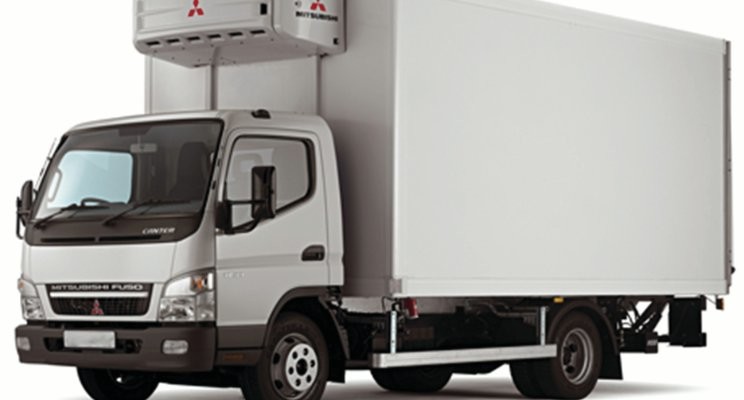Exactly How Refrigerated Trucks Run to Make Sure Safe and Efficient Distribution of Perishable Product
Refrigerated vehicles play an important role in the supply chain, making certain that disposable goods are moved safely and successfully. Using innovative refrigeration innovations and robust insulation, these automobiles maintain exact temperature control, which is crucial for protecting the top quality of sensitive items. Furthermore, modern-day developments in checking systems provide real-time understandings into inner conditions, additionally assuring compliance with sector standards. Nevertheless, regardless of these innovations, difficulties remain in enhancing filling practices and navigating complicated logistics. Exploring these complexities exposes not only the innovation at job yet also the broader implications for food security and top quality assurance.
Summary of Refrigerated Trucks
Chilled vehicles, often referred to as reefer vehicles, play a vital function in the transportation of subject to spoiling products across various industries. These customized vehicles are created to keep certain temperature level varieties, making sure that products such as fresh fruit and vegetables, dairy items, meat, and pharmaceuticals remain secure for intake and efficient use. The procedure of refrigerated vehicles is important in lowering wasting and expanding the rack life of temperature-sensitive products.
Reefer trucks are outfitted with insulated cargo locations that are capable of maintaining reduced temperature levels, which can be adjusted according to the type of items being moved. The cars normally use a refrigeration device powered either by the vehicle's engine or an independent source of power, enabling consistent temperature level control during transit.
In addition to temperature level maintenance, these trucks are typically made with advanced tracking systems to track the inner environment, ensuring conformity with health and wellness and safety laws. Moreover, refrigerated vehicles contribute significantly to the supply chain, enabling prompt deliveries to stores, customers, and restaurants. Their essential function underscores the significance of reputable transport solutions in today's worldwide market, where quality is critical.
Key Refrigeration Technologies
Maintaining optimal temperature level control in cooled vehicles depends on numerous essential refrigeration modern technologies that boost effectiveness and reliability. Among one of the most typical systems is the vapor-compression refrigeration cycle, which makes use of a refrigerant to soak up warmth from the truck's inside, reducing the temperature level. This process involves a compressor, condenser, expansion shutoff, and evaporator, operating in tandem to distribute the cooling agent and maintain a constant environment.
An additional remarkable technology is using eutectic plates, which store and launch thermal energy. These plates are loaded with a phase-change material that solidifies at a particular temperature, supplying a stable cooling source. This method not only enhances power performance but additionally lowers the requirement for constant power supply throughout transit.
In addition, progressed insulation materials, such as polyurethane foam, significantly improve the thermal efficiency of cooled vehicles, decreasing temperature variations during loading and discharging. Some modern cooled vehicles additionally include telematics systems, permitting real-time monitoring of temperature and performance, thus ensuring compliance with safety criteria. Together, these innovations make certain the secure transportation of disposable items while enhancing operational performance and decreasing see this website power intake.
Temperature Level Control Mechanisms
Reliable temperature level control link mechanisms are critical in making sure the integrity of disposable goods during transportation. Chilled vehicles make use of innovative modern technologies to preserve consistent temperature level varieties, stopping spoilage and ensuring product safety. Central to these mechanisms is the refrigeration unit, which operates making use of vapor-compression or absorption refrigeration systems. These devices are created to cool the air within the cargo area efficiently and preserve the called for temperature level throughout the journey.
In addition, contemporary chilled vehicles are equipped with digital thermometers and programmable temperature level surveillance systems. These systems permit real-time tracking of internal temperatures, offering informs if the temperature level deviates from the fixed array. This capacity is important for compliance with wellness and safety and security laws.
Insulation likewise plays a pivotal role in temperature level control. High-quality insulation materials minimize heat exchange, preserving the desired internal conditions. Furthermore, air flow administration within the freight location is crafted to guarantee consistent temperature circulation, preventing hotspots that can endanger item honesty (transport refrigeration companies).
Ideal Practices for Loading

First, it is vital to pre-cool the truck before loading. This technique permits the temperature level control system to maintain, developing an excellent environment for subject to spoiling products. Next, products ought to be filled in a fashion that advertises air flow. Prevent overwhelming and obstructing vents, as this can lead to temperature level variations and hotspots.
Using pallets or shelving can aid in arranging items, ensuring that larger products are positioned at the base to stop crushing lighter things. Furthermore, it is essential to set apart different types of products, particularly those with differing temperature needs, to protect against cross-contamination and putridity.
Lastly, safeguarding the load with bands or internet will stop movement throughout transit, consequently reducing the threat of damage and preserving the integrity of temperature-sensitive items. check By adhering to these finest practices, operators can make certain risk-free and reliable delivery of subject to spoiling goods while maximizing the performance of their chilled trucks.
Difficulties and Solutions in Transportation
One substantial concern is temperature level fluctuations, which can take place due to equipment breakdown or inappropriate packing techniques. In addition, roadway problems and hold-ups can better aggravate temperature level control concerns, especially throughout expanded transportation times.
Advanced telemetry can offer real-time temperature level information, notifying drivers to any kind of anomalies. Training personnel on ideal loading and discharging techniques can lessen the danger of temperature level variances.
Another trick option involves course optimization. Using GPS and web traffic management modern technologies can aid vehicle drivers choose one of the most effective courses, minimizing transportation times and lessening direct exposure to unfavorable problems. Working together with reliable logistics companions who prioritize cool chain integrity is additionally important for making certain that products stay within called for temperature arrays.

Conclusion
In conclusion, cooled vehicles play a vital function in the effective and risk-free transport of perishable goods. Utilizing innovative refrigeration modern technologies and effective temperature control systems makes sure that items continue to be within required temperature varieties.
